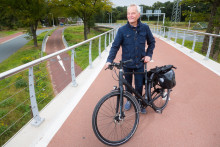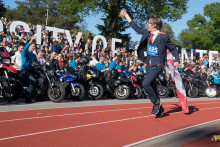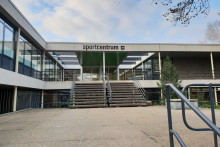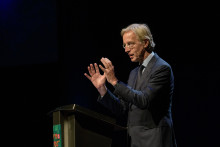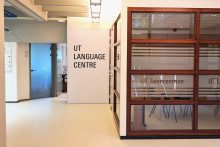Dutch people seem to love their bikes. Why is cycling so popular in the Netherlands?
‘Its pancake shape and short distances are certainly factors’, De la Bruhèze laughs. ‘Moreover, there are many bicycle lanes. Still, a favourable geographical setting and infrastructure do not guarantee that many people will automatically jump on their bikes. You also need an enabling culture. In the Netherlands, cycling is not looked down upon or seen as the poor man’s means of transport, as is sometimes the case in other countries. It’s simply a part of life.’
‘That’s not to say that cycling has to be culturally neutral, to be attractive to all layers of society. Take Denmark. Kopenhagen is a great cycling city, but there cycling is cleverly framed as something typically Danish. It’s called being ‘Kopenhagenised.’ Meanwhile, culture leads to policy measures – and vice versa.’
Can you say a bit more on this?
‘The sixties are a good example. In Europe, including the Netherlands, bikes seemed on their way out; once people had made enough money they replaced them by faster means of transport like mopeds and cars –just like substitute theory predicts. But the negative effects of a growing number of cars in the streets and the emergence of social reform movements changed all that. People started to protest against cars taking over the city and undermining urban liveability.'
‘Policymakers couldn’t ignore these demands and started to allocate space for urban cyclists. In an attempt to combine traffic speed, traffic flow and traffic safety the building of cycling lanes boomed. Also because policy had focused on cycling for leisure, which mainly occurred in the countryside. Thanks to the growing policy attention to urban cycling infrastructure, cycling in the city became increasingly common. Cycling thus has a political and cultural edge.’
Illustrated by beautiful photographs, the book chronicles cycling policies, cultures and practices in fourteen European cities. But why did you and your co-authors limit the focus to urban areas?
‘We wanted to learn more about normal, daily life cycling in cities, a topic that has thus far been relatively neglected in research. Our aim is to show what type of cycling practices have developed in cities – and why. The book is a mere first step. It covers mostly cities in Western Europe, but by linking up with experts from all over the globe we hope to include many more cities.’
‘To ensure that the research results are also valuable to stakeholders like policymakers and NGOs we published Cycling Cities as a popular science book; naturally without compromising academic rigour. Our website Cyclingcities.info was also created to that end. It shares our latest research insights in accessible language. Also, readers can leave comments or share our knowledge with others. Teachers will soon be able to download lesson plans, for instance.’
Together with Malmö, Kopenhagen, Amsterdam and Utrecht, Enschede leads the way when it comes to cycling: bike trips make up over 30% of all traffic. How does having a large number of cyclists affect cities?
‘On the whole it’s a blessing: bikes don’t pollute, produce noise, damage streets, take up much space or hit someone fatally. But to ensure cycling remains safe, municipalities need to invest in measures that promote traffic calming. Bicycle paths are expensive and don’t influence automobility. Traffic mixing and traffic calming do. But such a policy requires political guts. Measures like one-way roads, speed limits and parking prohibitions are highly unpopular with car owners and organizations representing them.’
‘Also, local authorities feel increasingly under pressure to regulate cycling. Take bicycle parking at bicycle hotspots like train stations. Even at our campus cycling parking is seen as an issue that needs to be solved: your bike may be towed away when it’s not in a rack. But the racks are sometimes full, and they don’t match students’ cycling culture.’
What are possible solutions for the lack of parking space for bikes?
‘The challenge is to arrive at creative solutions. Given the many benefits of cycling as a sustainable mode of transport, we should perhaps wonder if it’s indeed such a problem if parts of the city are dominated by bikes and therefore a little messy. Isn’t that preferable to a city filled by cars?’


